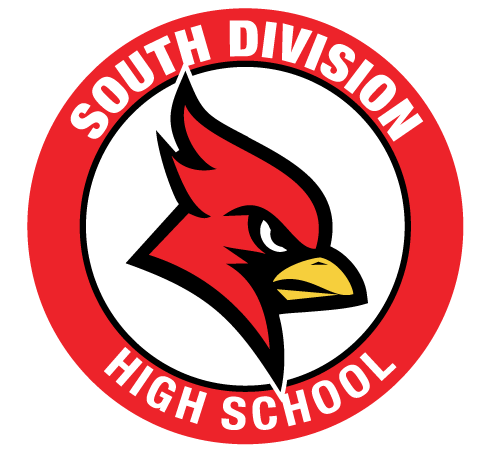Academic programs at South Division High School are diverse and designed to help students cultivate their unique talents and abilities.
Students can attend college courses on our campus, develop independence and competitive career skills in apprenticeship or transition programs, learn a second or third language — even earn the prestigious Seal of Biliteracy.
All courses of study are aligned to Common Core State Standards that set goals for what students learn at each grade level. Dedicated faculty and staff support our students every step of the way, encouraging them to pursue personalized paths to graduation day that prepare them for college or career, citizenship and service.
For a complete list of the district’s high school programs, courses, and graduation requirements, review the MPS High School Programs and Graduation Requirements guide.
Advanced Placement (AP)
Sponsored by the College Board and taught by South Division teachers, Advanced Placement courses give students the chance to tackle advanced content and earn college credit.
Career and Technical Education
South Division students interested in careers in education/training or health sciences can earn high school and college credit, develop trade and technical skills, and participate in internships and apprenticeships before they graduate by participating in dual enrollment, career academy, and internship and apprenticeship opportunities.
Career Academies – Education and Health Sciences
South Division’s NAF Academy of Education and NAF Academy of Health Sciences are part of the nationwide NAF network. After four years of career-focused classes, field experiences, and networking that extends from our classrooms into the community, South Division graduates with NAF experience have a competitive edge in applying for college, scholarships, and jobs.
Internships
School-to-Work Transition Program
Youth Apprenticeships
Learning a trade and earning a paycheck are among the benefits of youth apprenticeships for junior and senior students who alternate classes at South Division with trade apprenticeships. Each student is paired with a mentor who is a journeyman in a student’s chosen trade. Construction and HVAC apprenticeships are especially popular with South Division students.
Core Subjects
Students enroll in classes — ranging from foundational to advanced — that fulfill graduation requirements in these core subjects: English/Language Arts, mathematics, science, social studies, and world languages.
Credit Recovery
Students who earn a “U” or “D” in a core course may use this district-approved online curriculum to recover credits.
Dual Enrollment
Students earn high school and college credit, at the same time, in dual enrollment courses. South Division educators with advanced degrees may be approved to teach Milwaukee Area Technical College (MATC) or UW-Milwaukee (UWM) courses in our school. Depending on the course, some students may even attend classes on the MATC or UW-Milwaukee campus.
Early College Credit
Wisconsin high schoolers can take one or more courses at an institution of higher education.
M-Cubed College Connections Program
The M3 College Connections program is an innovative dual enrollment program of Milwaukee Public Schools (MPS), Milwaukee Area Technical College (MATC), and the University of Wisconsin-Milwaukee (UWM) that allows eligible students to complete their high school graduation requirements while earning college credits from both MATC and UWM at no expense to the student. Students successfully completing the program have guaranteed admission to MATC and UWM. Students must be in good standing and on track to graduate in order to participate in the program.
Start College Now
Wisconsin high schoolers can take one or more courses at a two-year or technical college.
Electives
Students can fulfill graduation and college entrance requirements while gaining new insight and knowledge in elective courses. Elective courses typically reflect a school’s focus, such as the arts, engineering, technical education, or foreign language.
English Learners
Approximately fifty percent of South Division students are English learners. The school offers specialized academic programs to accommodate English learners from more than a dozen linguistic backgrounds.
Bilingual Dual Language Program
International Newcomer Center
Sheltered Instructional Observation Protocol (SIOP)
Seal of Biliteracy
The Seal of Biliteracy is awarded to high school seniors who show English language proficiency, proficiency in another language, and sociocultural competency. Students who successfully earn the seal receive a special Seal of Biliteracy certificate issued by the State of Wisconsin Department of Public Instruction when they graduate. Graduates also receive a lapel pin signifying their completion of the program, and the accomplishment is noted on the student’s high school transcript.
